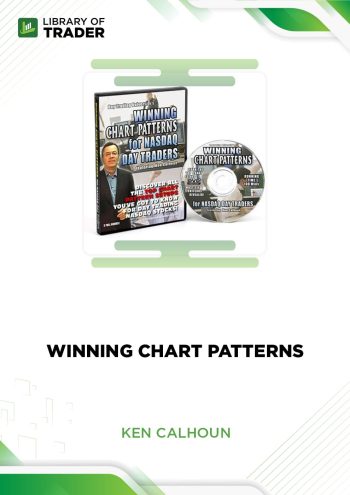Pairs Trading reveals the secrets of this rigorous quantitative analysis program to provide individuals and investment houses with the tools.
Course Overview
Pairs trading is a market-neutral strategy in its most simple form. The strategy involves being long (or bullish) on one asset and short (or bearish) on another. If properly performed, the investor will gain if the market rises or falls. Pairs Trading reveals the secrets of this rigorous quantitative analysis program to provide individuals and investment houses with the tools they need to successfully implement and profit from this proven trading methodology.
Course Outline
Preface.
Acknowledgments.
PART ONE: BACKGROUND MATERIAL.
- Chapter 1. Introduction.
- The CAPM Model.
- Market Neutral Strategy.
- Pairs Trading.
- Outline.
- Audience.
- Chapter 2. Time Series.
- Introduction.
- Autocorrelation.
- Time Series Models.
- Forecasting.
- The goodness of Fit versus Bias.
- Model Choice.
- Modeling Stock Prices.
- Chapter 3. Factor Models.
- Introduction.
- Arbitrage Pricing Theory.
- The Covariance Matrix.
- Application: Calculating the Risk on a Portfolio.
- Application: Calculation of Portfolio Beta.
- Application: Tracking Basket Design.
- Sensitivity Analysis.
- Chapter 4. Kalman Filtering.
- Introduction.
- The Kalman Filter.
- The Scalar Kalman Filter.
- Filtering the Random Walk.
- Application: Example with the Standard & Poor Index.
PART TWO: STATISTICAL ARBITRAGE.
- Chapter 5. Overview.
- History.
- Motivation.
- Cointegration.
- Applying the Model.
- A Trading Strategy.
- Road Map for Strategy Design.
- Chapter 6. Pairs Selection in Equity Markets.
- Introduction.
- Common Trends Cointegration Model.
- Common Trends Model and APT.
- The Distance Measure.
- Interpreting the Distance Measure.
- Reconciling Theory and Practice.
- Chapter 7. Testing for Tradability.
- Introduction.
- The Linear Relationship.
- Estimating the Linear Relationship: The Multifactor Approach.
- Estimating the Linear Relationship: The Regression Approach.
- Testing Residual for Tradability.
- Chapter 8. Trading Design.
- Introduction.
- Band Design for White Noise.
- Spread Dynamics.
- Nonparametric Approach.
- Regularization.
- Tying Up Loose Ends.
PART THREE: RISK ARBITRAGE PAIRS.
- Chapter 9. Risk Arbitrage Mechanics.
- Introduction.
- History.
- The Deal Process.
- Transaction Terms.
- The Deal Spread.
- Trading Strategy.
- Quantitative Aspects.
- Chapter 10. Trade Execution.
- Introduction.
- Specifying the Order.
- Verifying the Execution.
- Execution During the Pricing Period.
- Short Selling.
- Chapter 11. The Market Implied Merger Probability.
- Introduction.
- Implied Probabilities and Arrow-Debreu Theory.
- The Single-Step Model.
- The Multistep Model.
- Reconciling Theory and Practice.
- Risk Management.
- Chapter 12. Spread Inversion.
- Introduction.
- The Prediction Equation.
- The Observation Equation.
- Applying the Kalman Filter.
- Model Selection.
Applications to Trading.
Index.
What Will You Learn?
- Learn specific and tested formulas for identifying and investing in pairs
- How to implement and profit from the proven trading methodology
- Know what ratio should be used to construct the pairs properly
Who Is This Course For?
Pairs Trading: Quantitative Methods & Analysis is for all traders who want to learn to study technical analysis.
Ganapathy Vidyamurthy
Please Login/Register if you want to leave us some feedback to help us improve our services and products.
RELATED COURSES
VIEW ALL-
 12 Major Candlestick Signals – Stephen W. BigalowDOWNLOAD12 Major Candlestick Signals – Stephen W. BigalowUpdate 14 Nov 2022BeginnerDOWNLOAD
12 Major Candlestick Signals – Stephen W. BigalowDOWNLOAD12 Major Candlestick Signals – Stephen W. BigalowUpdate 14 Nov 2022BeginnerDOWNLOAD12 Major Candlestick Signals by Stephen W. Bigalow sheds light on trading techniques and strategies to decode trend patterns and gain practical insights for effective strategy development.
Add to wishlist -
 Professional Trading Masterclass – Anton KreilDOWNLOADProfessional Trading Masterclass – Anton KreilUpdate 06 Nov 2022AdvancedDOWNLOAD
Professional Trading Masterclass – Anton KreilDOWNLOADProfessional Trading Masterclass – Anton KreilUpdate 06 Nov 2022AdvancedDOWNLOADThis course teaches you how to set yourself apart from the masses as 90%of traders fail to make cash when buying and selling the stock marketplace. This course will provide you with the needed knowledge and tools to be in the top 10%.
Add to wishlist -
 Follow the Fed to Investment Success – Douglas S.RobertsDOWNLOADFollow the Fed to Investment Success – Douglas S.RobertsUpdate 20 Dec 2022All LevelsDOWNLOAD
Follow the Fed to Investment Success – Douglas S.RobertsDOWNLOADFollow the Fed to Investment Success – Douglas S.RobertsUpdate 20 Dec 2022All LevelsDOWNLOADDoug Roberts’ Follow the Fed to Investment Success is an easy-to-understand guide to investing that anybody can implement with little work and even less time. The guide, based on the assumption that there is a clear link between stock market success and Federal Reserve Bank operations, provides insights into how to generate genuine wealth in today’s markets.
Add to wishlist -
 How to Stack Your Trades – JenniferDOWNLOADHow to Stack Your Trades – JenniferUpdate 03 Nov 2022All LevelsDOWNLOAD
How to Stack Your Trades – JenniferDOWNLOADHow to Stack Your Trades – JenniferUpdate 03 Nov 2022All LevelsDOWNLOADHow to Stack Your Trades by Jennifer give you chart templates, tons of trade examples, clear instructions, and much more.
Add to wishlist -
 Pairs Trading: Quantitative Methods & Analysis – Ganapathy VidyamurthyDOWNLOADPairs Trading: Quantitative Methods & Analysis – Ganapathy VidyamurthyUpdate 01 Nov 2022BeginnerDOWNLOAD
Pairs Trading: Quantitative Methods & Analysis – Ganapathy VidyamurthyDOWNLOADPairs Trading: Quantitative Methods & Analysis – Ganapathy VidyamurthyUpdate 01 Nov 2022BeginnerDOWNLOADPairs Trading reveals the secrets of this rigorous quantitative analysis program to provide individuals and investment houses with the tools.
Add to wishlist -
 Winning Chart Patterns – Ken CalhounDOWNLOADWinning Chart Patterns – Ken CalhounUpdate 11 Nov 2022BeginnerDOWNLOAD
Winning Chart Patterns – Ken CalhounDOWNLOADWinning Chart Patterns – Ken CalhounUpdate 11 Nov 2022BeginnerDOWNLOADWinning Chart Patterns by Ken Calhoun helps you to learn about technical analysis. It contain 4 videos by ken calhoun from trading television and day trading university.
Add to wishlist



Reviews
There are no reviews yet.